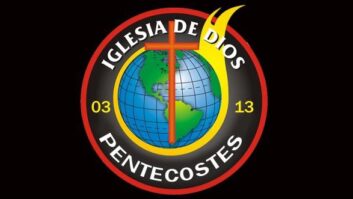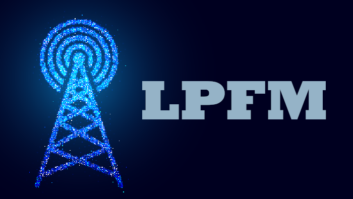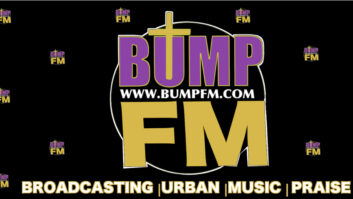The Federal Communications Commission in October held its second webinar to answer questions about low-power FM. The filing window for those new applications is open until Nov. 14. The webinar session included questions and answers with Media Bureau representatives about the LPFM Channel Finder, creating a CDBS account, filling out the application and other issues. (Watch the webinar.)
Radio World asked LPFM applicant Dan Slentz, an occasional RW contributor, for his takeaways from that webinar. He writes below. Remember that neither he nor Radio World are legal advisors, so this is informational only.
The FCC staff reiterated numerous times that owning one LPFM means you can have just one. One! Uno? Ichi? Ein! They couldn’t have said it many other ways and still be easily understood.
Individual board members should not appear on multiple LPFM construction permit applications without stating that they will resign from any other or all but one board should a CP be granted. If a board member is on the board of an organization holding broadcast license or licenses (LPFM, noncom or commercial), or is a major stockholder in a company holding one or more broadcast licenses, he or she should indicate that they will resign from interest or ownership in any other broadcast licenses. This includes resigning from any other boards that hold broadcast licenses (LPFM, non-profit or commercial).
Colleges can have an LPFM if the existing college-owned station (assuming an NPR) is not run by students and the LPFM would be student-run. Often college stations are NPR-affiliated, serve a non-commercial mission and are run by a paid college staff (with students occasionally working at the station).
A Catholic school system under one legal non-profit, such as a diocese, can apply only for a single LPFM; if a group of Catholic schools fell under one diocese, and it was the legal organization, then only one is allowed.
Some questions came up about technical aspects. The FCC’s James Bradshaw (whom I’ve talked with over the years but never actually met) was great in explaining those. The most memorable concerned knowing your effective radiated power. He said don’t worry about that, just fill out what we’re asking for and we’ll determine your ERP.
They simplified the entire “getting your LPFM on-the-air” as a three-part process:
1) File Form 318 – your construction permit
2) Call Sign Reservation System
3) File 319 – License to Cover
Konrad Herling (202-418-2769) said he and David Trout (202-418-2662) would be glad to help with questions. Also said they could assist if/when applicants get to the call sign reservation portion. One question concerned the station call sign and the response basically was, “Worry about that if/when the time comes.”
Stations will have 18 months to build and get on the air. The question of extensions came up. Yes, you can get one single 18-month extension if needed; and that’s all. So theoretically, once a CP is granted, a station could have three years to get on the air (with approved extension).
Some discussion came up about second and third adjacency channels, and also about proof of lack of interference. Many people asked if they could simply say “No, it won’t interfere.” The response was consistently, “You must prove it through documentation.” This documentation must be a technical example with contouring maps. The methodology typically accepted for FM translators was mentioned. Normally this requires RF engineering above the “novice level.”
One individual asked if they could present an affidavit from an existing broadcaster saying “we’ll accept interference,” and the answer was a resounding “no.” At least one college organization asked if interference would be acceptable to another’s frequency if it were on their property (the college campus or building); that also produced a big “no.” No interference (period).
When construction permits are submitted and evaluated, the commission may need to “weigh” the applicants. An applicant can claim “points” in this system, and the number of points may determine who receives the permit. As for these “bonus points” in the weighed evaluation: If you affirm the following are met (individually), each will gain you a point:1) Your nonprofit has been in existence for two or more years,2) your board is local or your campus is local, and 3) you pledge to provide eight or more hours of programming per day.See below for more.
If everything still comes out equal between applicants, the FCC tends to look for a time-share agreement where the applicants share the frequency. Additionally the FCC will allow an applicant at this point to modify a construction permit to move to another frequency, if one is available. It’s unclear what would happen if both applicants are equal, they won’t time share and no other frequencies are available; that question didn’t come up.
Existence of Non-Profit: You must prove that your non-profit has been a state-recognized legal non-profit organization for at least two years. This must be proved by legal documentation showing your incorporation or non-profit (again, as recognized by the state in which the station is to be licensed). In one case, a church had been around for over 100 years but was not “incorporated” or “legally a recognized non-profit.” In this case it would NOT qualify until it became legally recognized.
Local Board/Local Campus Requirement: The applicant must indicate they have an all-local board — 75% of members must live within a 10 mile-distance (or, below the top 50 urban markets, 20 miles) or the organization is physically headquartered or has a campus within 10 miles of the proposed transmitter site (again, those below the top 50 urban markets are given the 20 mile distance requirement). The question came up: What if you qualify to claim both local board and local campus, which is certainly possible. Pick only one. The form will give you an error if you choose both, indicating you can only choose one even though both are true.
Eight Hours of Programming Per Day: This, by their own words, is a “pledge” to be on the air with locally generated content eight hours a day. It is not legal to directly rebroadcast another non-LPFM station. And rebroadcasting a satellite service seems to not align itself with the intent of LPFM licensing. Locally originating programming specifically to the broadcast license area is the goal. This is why the application contains this “pledge” that you WILL be local.
In my opinion the FCC has done a great job with their construction permit application, in terms of simplicity. The supporting document on how to fill out the application answers most questions thoroughly, so applicants should have no trouble filling it out.
Remember that when dealing with any government agency like the FCC, any legal responses, supporting documents and explanations must be accurate, detailed as necessary and technically accepted in their descriptions. My opinion is that using “emotional statements” in documents such as “the community wants us” or “the other stations don’t support the community” (whether true or not) simply do nothing to support your application. PROVE through your exhibits that you will be a professional station and support the community and your non-profit cause. Having a great collection of MP3s on your MP3 player does NOT make a good radio station. Having reliable/professional gear, maintaining proper modulation, broadcasting a quality signal, supporting the community and your non-profit, reliably rebroadcasting emergency information, and generally being a responsible broadcaster is what this is all about.
Watch the Oct. 24 webinar:
Watch the Aug. 20 webinar:
Opinion: Filing for an LPFM (Slentz, Oct. 2013)










